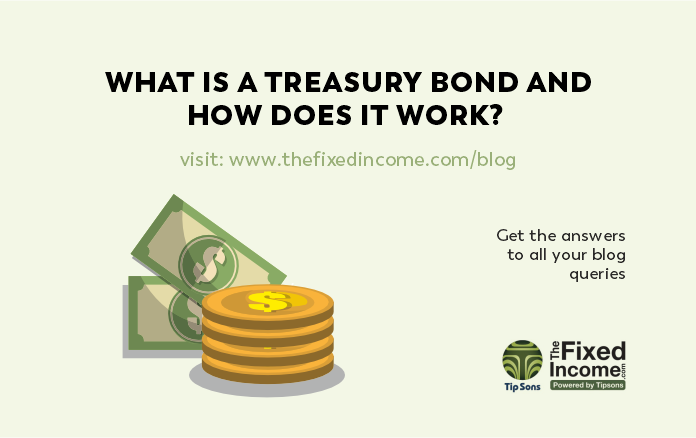Treasury bonds (also known as T-bonds) are debt obligations that the US government issues and guarantees with its full faith and credit. They effectively function as loans from the public to the government, with periodic interest payments and ultimate principal repayment upon bond maturity.
T-bonds, T-notes, and T-bills are the three primary categories of Treasury securities. All three are traded in the fixed-income market, a highly liquid secondary market (more commonly known as the bond market). Treasury bonds that pay out a set interest rate to investors every six months are referred to as having “fixed income.”
Treasury securities’ interest payments offer a fairly assured source of income. Even while money in a high-yield savings account may often be accessed much more easily and quickly, the interest rate (or yield) on a 30-year T-bond is often in the same range as the interest rate for that account. A T-significantly bond’s longer term makes it distinct from a money market account.
How to Buy Treasury Bills
-
Competitive auctions with bids
In a competitive bidding auction, investors buy T-bills at a specific discount rate that they are inclined to acknowledge. The lowest rate or discount margin that each bidder or investor will accept is specified in the bid. The lowest discount rates in the bids are considered first.
If there are not sufficient bids at that level to cover the issue entirely, bids at the next lowest rate may be submitted. The process is continued until the entire issue has been sold. The purchase payments must be made through a broker or a bank.
-
Secondary Market
On the secondary market, investors may purchase and sell Treasury notes. Additionally, there are Exchange-Traded Funds (ETFs) and mutual funds that hold T-bills that have already been issued.
-
Uncompetitive Bid
In a non-competitive bid, the investor consents to accept the auction’s chosen discount rate. The average auction price for T-bills sold at auction is the yield that an investor obtains. Since they are certain of receiving the entire amount of the bill at the end of the maturity period, individual investors like this strategy. The investor’s bank or broker, as well as TreasuryDirect, are used to make payments.
How does Treasury Bond Work?
- The yield to maturity and interest rate are the two variables that affect the price of fixed-rate instruments like T-bonds (YTM). The entire return that the owner of a T-bond can anticipate receiving if they hold the bond to maturity is known as the YTM.
- The face value of the bond—the sum that was initially invested—will be returned to the T-bond holder along with the interest payments upon maturity.
- T-bond owners are exempt from paying federal, state, or municipal income taxes. The interest received from T-bonds will be taxed by the federal government. T-bonds are chosen by those who reside in states with higher tax rates because of this.
- Every six months, bonds will pay their bearer a specified rate of interest.
- A government bond’s returns will typically increase with its maturity length. T-bonds can, however, be traded on the secondary market before they mature.
Factors Affecting the Prices of Treasury Bills
-
Maturity Period
A T-bills price is influenced by its maturity time. A one-year T-bill, for instance, normally offers a larger rate of return than a three-month T-bill. This can be explained by the fact that longer maturities come with increased risk for investors.
A $1,000 T-bill, for instance, may be offered for sale for $970 for a three-month T-bill, $950 for a six-month T-bill, and $900 for a twelve-month T-bill. Investors look for a better rate of return to make up for locking up their money for a longer period of time.
-
Inflation
The current rate of inflation may also have an impact on the cost of T-bills. It becomes uneconomical to invest in T-bills, for instance, if inflation is 5% and the T-bill discount rate is 3%, as the actual rate of return will be negative. As a result, there will be less of a market for T-bills, which will result in lower pricing.
-
Monetary Policy
The price of T-bills will probably be impacted by the Federal Reserve’s monetary policies. The Fed(eral) Funds rate, which is the interest rate established by the Fed, and is more closely tracked by T-bill interest rates. However, an increase in the Federal Funds rate tends to encourage investment in other debt securities, which lowers the interest rate on T-bills (due to lower demand). Up until the T-bill interest rate exceeds the Federal Funds rate, the decrease persists.
Wrapping Up
Hence, with the above-discussed article, it will be clear what are treasury bills and how does it work. Also, what are the factors that are affecting the prices of the T-bills.
























